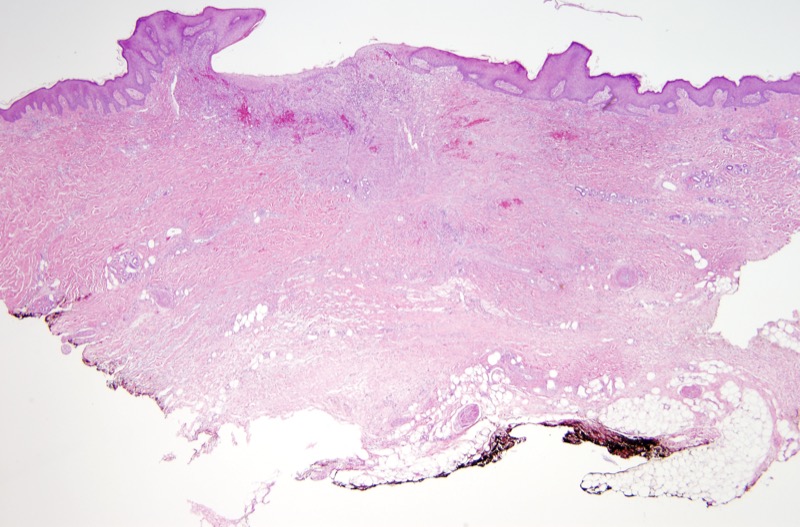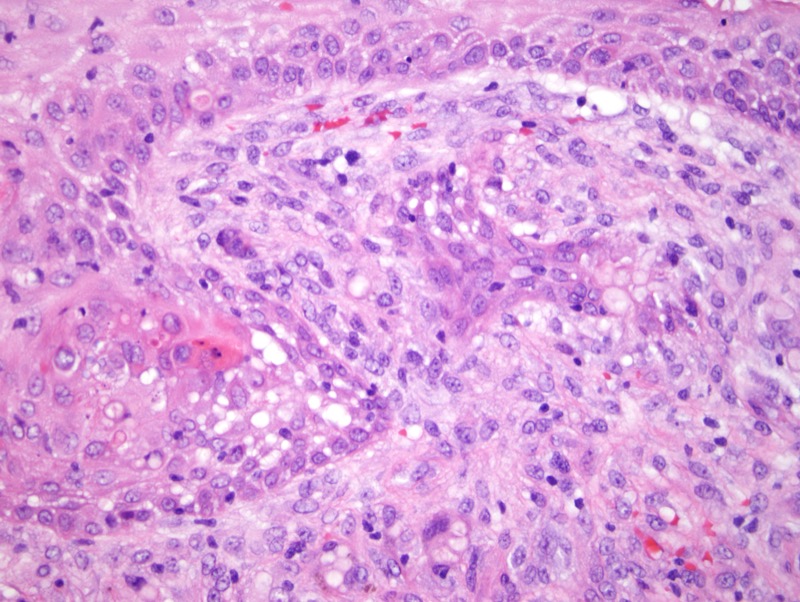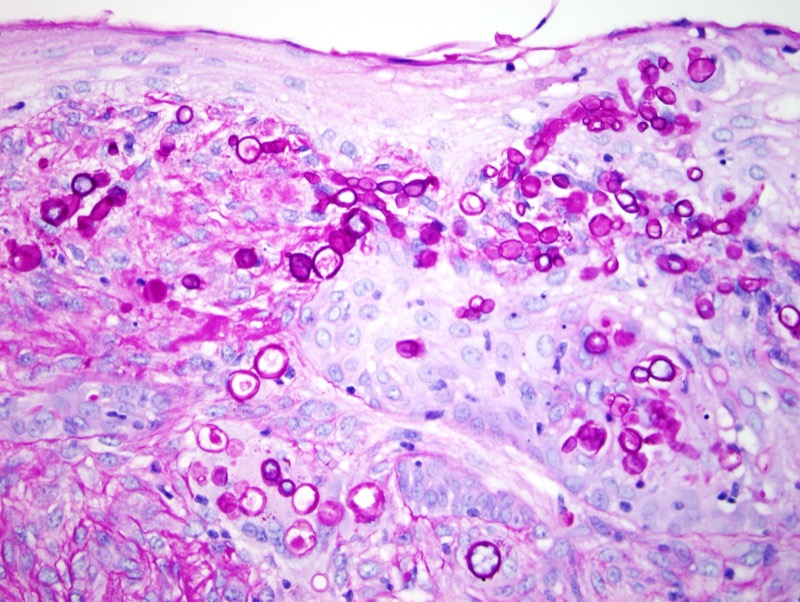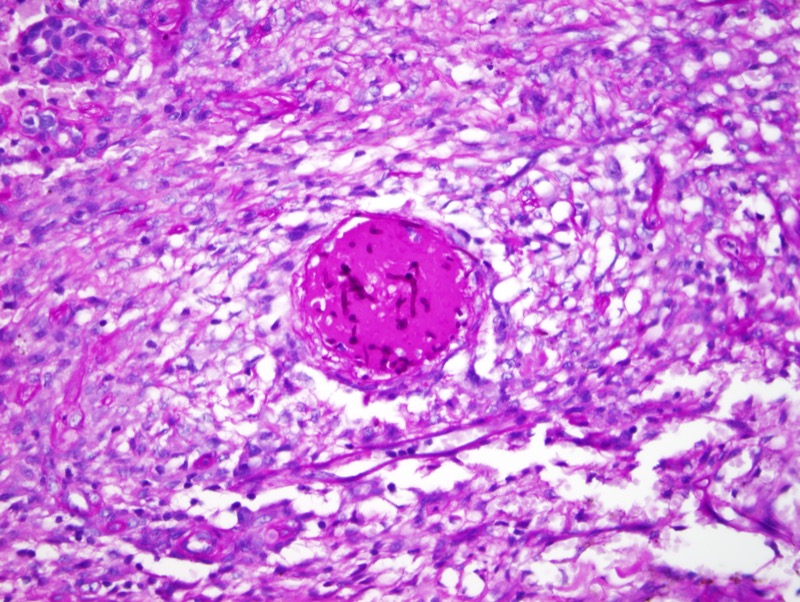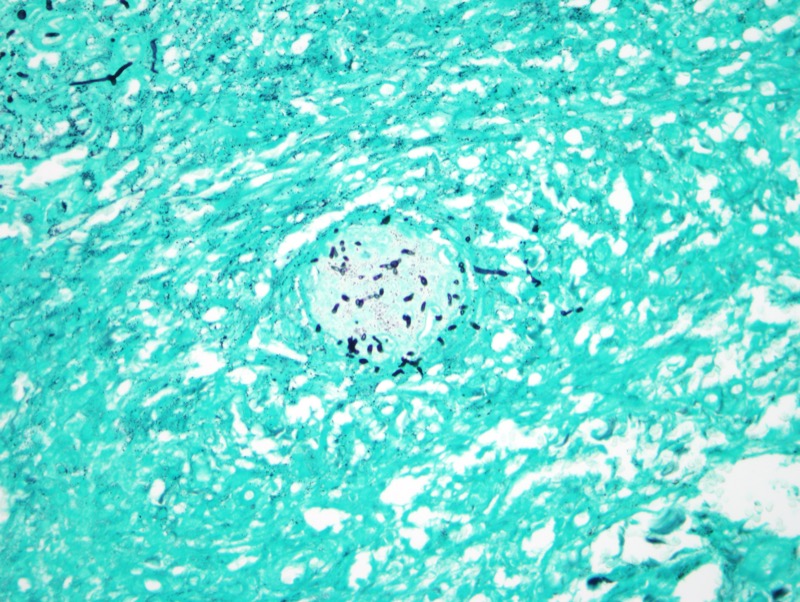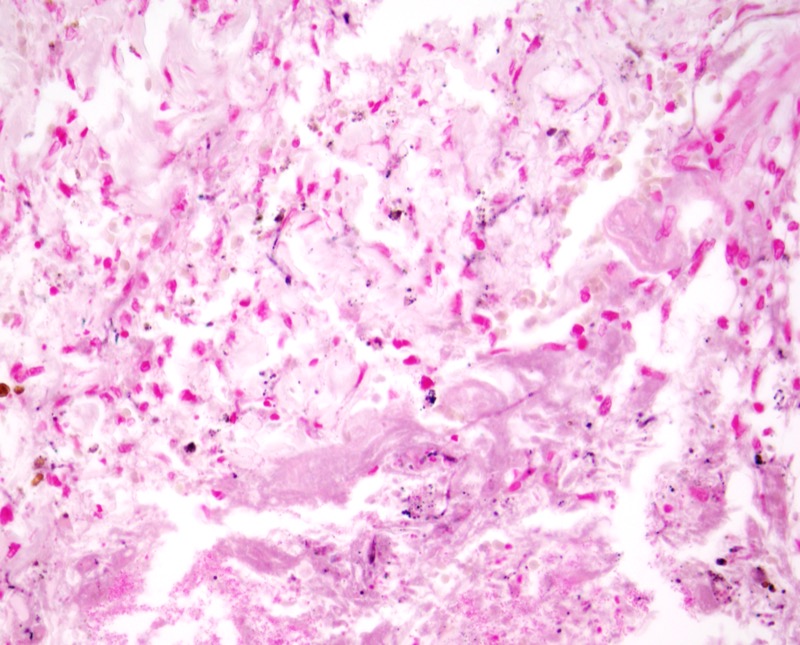Cutaneous alternariosis is an opportunistic infection that has been described mainly in immunocompromised patients. The fungus has a characteristic morphology for the genus Alternaria being a thin septated fungus almost reminiscent of fusarium and aspergillosis however it is pigmented representing a dematiaceous or darkly pigmented fungus. The dematiaceous fungus has unique pathogenic mechanisms owing to the presence of melanin in their cell walls. The melanin pigment is a virulence factor conferring a protective advantage, scavenging free radicals and hypochlorite that are produced by phagocytic cells and kill most organisms. Alternaria infection has a broad clinical spectrum of cutaneous manifestations including vegetating tumorous infiltrates whereby the predisposing factors are jobs with frequent contact with soil, diabetes mellitus, and local skin trauma associated with immunosuppression.


